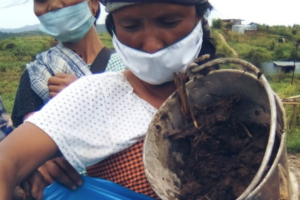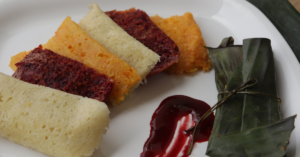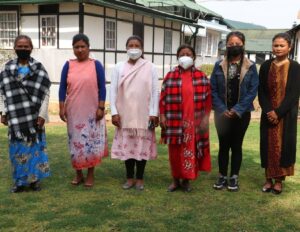Recently one of the authors was made aware of the Free Rice campaign launched by the World Food Programme (WFP). The campaign is implemented through the Freerice website and mobile application which allows participants to donate rice to needy families by playing a multiple-choice quiz game. Every correct answer results in ten grains of rice donated via the United Nations World Food Programme. The total score is displayed as mounts of rice and the number of grains earned. The game is relatively simple and those interested can go to this link https://www.freerice.com/age-screen. While the initiative is highly commendable and we encourage everyone to go and participate, it also raises some important questions.
The choice of rice as the food of focus is understandable. Presently, rice, maize and wheat supply more than 50% of the world’s food energy intake. In other words, the aforementioned crops are the most dominant staples consumed by the majority of the world’s population. While many cultures have evidence of rice cultivation, the earliest archaeological evidence comes from central and eastern China and dates to 7000–5000 BCE. The cultivation of wheat, on the other hand, started around 10,000 years ago with its origin being traced back to Southeast Turkey. Maize was also first domesticated by the indigenous people in southern Mexico about 10,000 years ago. From their place of origin, these crops have now spread throughout the world. According to the data provided by the Directorate of Agriculture, Govt. of Meghalaya, rice and maize are grown by farmers in all the districts of the State. Cultivation of wheat, however, is limited to West Khasi Hills, East Garo Hills, North Garo Hills, West Garo Hills, and South West Garo Hills. At the moment, rice is the most important staple food of the people in the State with maize primarily meant for animal feed. Has this always been the case? If not, what were the other staples that people consumed in the past? What has happened to them now?
Food staples are food (plants or animals or both) that are eaten regularly and supply the major proportion of a person’s energy and nutritional needs. They make up the dominant part of a population’s diet and vary depending on the plants and/or animals domesticated in a particular region. For example, in the islands of the South Pacific, roots and tubers such as taro are the traditional food staples while in the Andes Mountains of South America it is quinoa, a grain-like plant. Such plants are known as starchy staples as categorized by FAO (Food and Agriculture Organization of the UN) according to the guidelines derived from the ‘Minimum Dietary Diversity for Women: A Guide to Measurement’ report. According to the Directorate of Agriculture, Govt. of Meghalaya in 2017-2018 the starchy staples cultivated in Meghalaya are rice, wheat, maize, millet, potato, sweet potato, and tapioca. Among them, millet is an important crop that has been traditionally grown by the indigenous communities of Meghalaya since a very long time.
There is evidence to suggest that the local indigenous community i.e., the Khasis were growing millets (commonly known as krai) since the late 19th Century. Since the Khasis are an ancient group of the Indian sub-continent and millets were probably first cultivated in Asia more than 4000 years ago, it is highly probable that cultivation of the crop is a very old practice. Indications of this are the traditional festivals which are linked to millets. In 2015 NESFAS (North East Slow Food and Agrobiodiversity Society) and Department of Arts & Culture, Government of Meghalaya brought out the documentary ‘Kings Have Resorts/People Have Songs’ during the 2nd International Terra Madre (ITM) that was held in the State. The film was directed by Tarun Bhartiya and based on the research done by H.H. Mohrmen. It is about a weeding song called Long Hai which had not been sung in the village of Syndai (located in War Jaintia) for the last 60 years. Linked with millet, once its cultivation was abandoned, the song was also not performed anymore. The documentary looks at the effort to revive the festival by the local community with women playing an important role. It is certain Long Hai is not the only festival which has been lost as millets receded in importance (another example is provided later).
Just as it must have been the case in the past, millets are still usually grown in the jhum or shifting cultivation fields where seeds are broadcasted during the sowing season. The seeds are traditional seeds which have been preserved by custodian farmers. The 2018 participatory mapping exercise conducted by NESFAS in Khapmaw and Rasong (villages in Mawkynrew Block, East Khasi Hills) reports four millet species, viz., Digitaria sanguinalis (commonly known as crabgrass, finger grass and fonio), Eleusine coracana (commonly known as finger millet), Setaria italica (commonly known as foxtail millet) and Coix lacryma-jobi (commonly known as job’s tears) being grown by the local community. These included the three varieties of finger millet. Garo Hills reported the additional millet species of Pennisetum glaucum (commonly known as pearl millet).
Traditionally, millet is cooked in the same way as rice. In many cases, it is often mixed with rice, the preferred proportion being one part of millet and two parts of rice. Previously a kind of bread was also made out of it. In certain parts of Pynursla, millet was also being used to brew local liquor. Based on an informal conversation it was revealed to one of the authors who has a family in the area, that millet was still being grown until a few decades ago. Now broom and areca nut has become the main crop grown in his village and millet is replaced by food bought from the market. Cultivation of millet is very much linked to the jhum system. With the decline of this most ancient form of farming, the crop might also completely disappear in the future. To make matters worse even in areas where jhum is still strong, cultivation of the crop has started fading.
In Nongtraw, (a village in Khatarshnong Laitkroh Block, East Khasi Hills) although people still practiced jhum, only 2 out of 37 households were cultivating millets. Of the 4 varieties grown previously only one variety remained. In 2012, NESFAS with the support of local custodian famers like Kong Bibiana Ranee among others, revived and promoted the cultivation of millets in the village. Seeds of the lost varieties were sourced from Nagaland and nearby villages. The village is now growing four varieties of finger millet and job’s tears. Similar to Long Hai, the festival of Bom Krai (Millet threshing) was revived in Nongtraw. The initiative also encouraged 13 out of the 46 villages in the Khatarshnong area to rejuvenate the cultivation of millets. Similar impacts were recorded in Mawkynrew and some parts of Garo Hills as well.
Millets are often called “Nutri-Cereals” due to their high nutritional values. According to Dr. Aburto, Deputy Director in the Nutrition and Food Systems division of the UN Food and Agriculture Organization, compared to other cereals such as wheat, rice or maize, millets can grow under drought conditions, under non-irrigated conditions even in very low rainfall regimes, having a low water footprint. These features along with the fact that they require low maintenance and have disease and pest resistance, millets are also considered as a climate smart crop. Realizing the potential of millets in boosting sustainability, the UN General Assembly recently proclaimed 2023 as the International Year of Millets in March 2021, to promote cultivation as a solution to climate and global food security challenges.
Millet is not the only staple to have been consumed in Meghalaya. As reported by the Syiem of Sohra during a program organized by NESFAS, taro/shriew (Colocasia esculenta) was also very important in the past. It is still consumed but has been greatly side-lined by potato introduced in the 1830’s by David Scott. Like millets, taro is also nutritionally rich, especially in calcium. Focus on traditional staples is not only about reviving and protecting tradition. But like the Indigenous Peoples’ Food Systems to which it belongs, it holds tremendous solutions for solving many global problems including food insecurity and adaptation to climate change. It is time we revive the past to save the future.
This article was originally published in The Shillong Times



